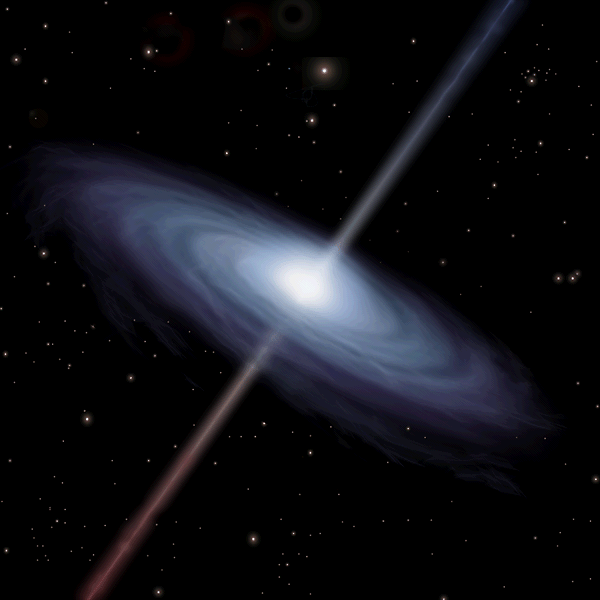New Record-Holders For Black Holes
Thursday, December 8th, 2011Dec. 8, 2011
A black hole recently found by scientists is so monstrous that it dwarfs any black hole found before. A black hole is an object in space so massive that nothing–not even light–can escape its gravitational pull. Located about 335 million light-years from Earth, the black hole has at least 20 billion times as much mass as the sun. It is also 2,000 times as massive as the black hole that resides in the center of the Milky Way Galaxy. A second black hole, found about 320 million light-years away, is nearly 10 billion times as massive as the sun. The previous record-holder among black holes is 6.7 billion times as massive as the sun.
The new black holes also have humongous event horizons (surfaces). At the event horizon, gravity is strong enough to capture even light. The event horizon of the larger of the black holes extends five times as far as the distance between the sun and the orbit of Pluto. If the sun collapsed into a black hole, its event horizon would be about 2 miles (3.4 kilometers) across.

A supermassive black hole sucks in a swirling disk of matter, shooting out beams of particles in this artist's illustration. A supermassive black hole has a mass from millions to billions of times that of the sun. NASA
Scientists think two black holes may be the remains of quasars, luminous objects seen in the early universe but not found in more recent times. Quasars are thought to be black holes that give off tremendous energy in the process of sucking in the matter around them. The newly identified black holes may be the remains of quasars that have dimmed after exhausting the supply of matter in their neighborhoods. Astronomers at the University of California, Berkeley, measured the mass of the black holes by clocking the speeds at which stars orbit (revolve around) them. The faster the stars orbit, the greater the mass of the black hole required to keep the stars from being flung into space.
Additional World Book articles:


